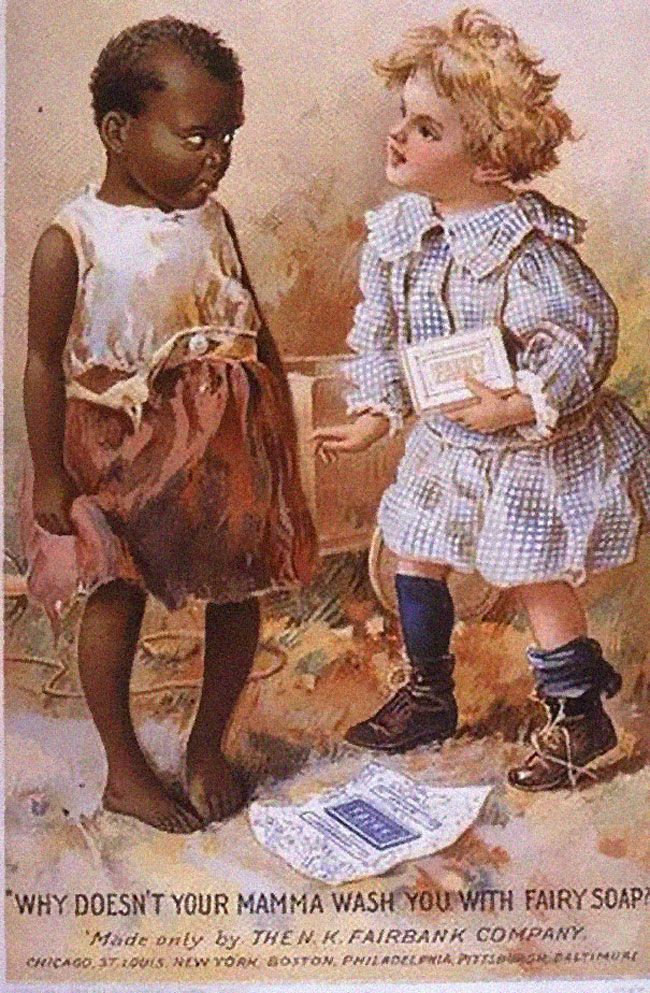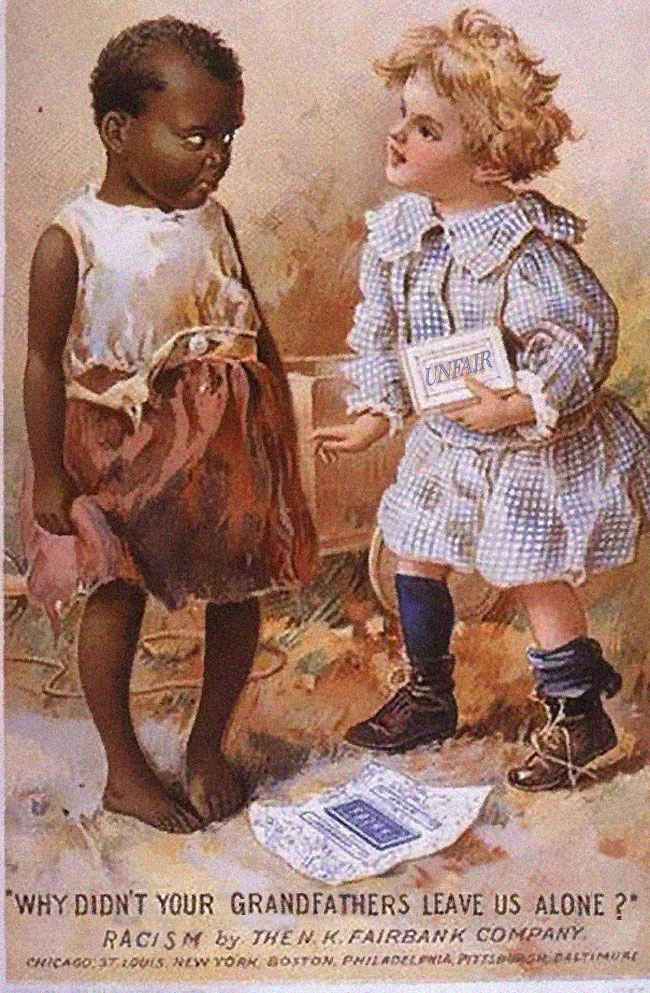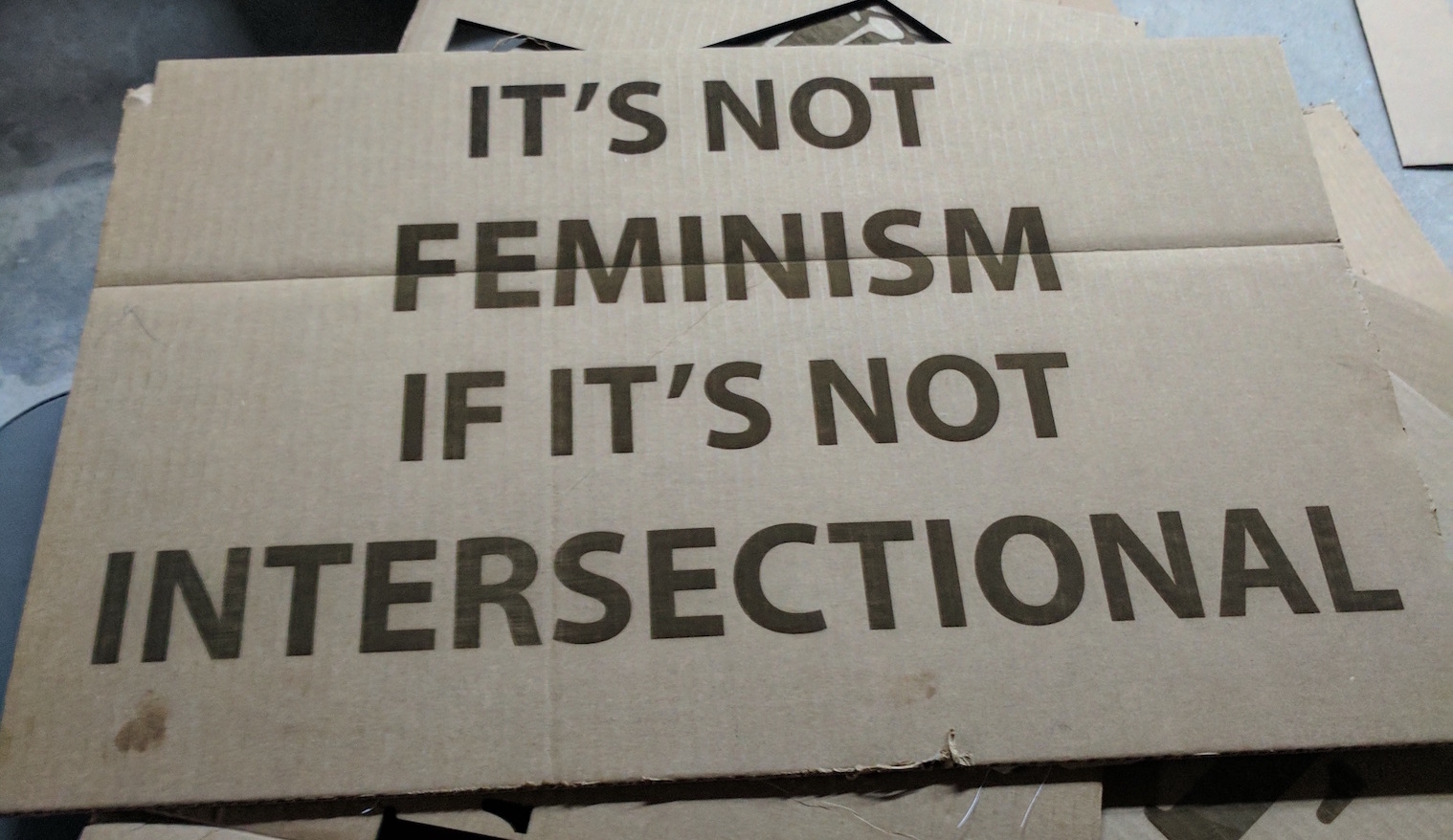Original Ad:

By the mid-nineteenth century, mass manufacture of soap transformed its unenthusiastic scarcity into an burgeoning imperial commerce (McClintock 207). Around the world, “Victorian cleaning rituals became peddled as the God-given sign of Britain’s evolutionary superiority” (McClintock 207). With the abolishment of slavery, the promise of equality for African Americans, and influx of new immigrants, “a biological justification for white supremacy pouncing on the fears of contagion developed” (Zimring 106). In a world where dirt could quickly kill thousands in dense cities, “[t]he rhetoric and imagery of hygiene became conflated with a racial order that made white people pure and anyone who was not white, dirty [pollutants]” (Zimring 89, 98). The ‘soap saga,’ with its hidden affinity between domesticity and empire, embodied a triangular crisis in value: “the undervaluation of women’s work in the domestic realm, the overvaluation of the commodity in the industrial market, and the disavowal of colonized economies in the arena of empire” (McClintock 208). By exploiting marketing and object fetishism, commodity racism distinguished itself from scientific racism through its ability to permeate beyond the educated elite and became universally pervasive (McClintock 208). In this 1989 N. K. Fairbank Company advertisement, an outdoor interaction between two young girls is depicted. The blond-haired, blue-eyed white child inquires to the other, “Why doesn’t your Mamma wash you with Fairy Soap?” The brief statement demonstrates the naturalized assumption that a “Mamma” would be the sole individual designated to childcare, likely in the form of an undervalued stay-at-home mother, opposed to equal domestic labour contributions from both parents. Constructs of racial impurity are evident in the image through the overt implication that the black child is filthy, animalistic, and impoverished in juxtaposition to the clean and ‘pure’ affluent white girl. These stereotypes explicitly racialized dirt to be synonymous with disease, and positioned soap as the potent tool against these undesirable traits (Zimring 89, 91). These sentiments are further emphasized through body language; the white child, in her well-kept clothing and shiny shoes, clutches the bar of soap and possesses a sure-footed assertive stance. With a pointed hand, she actively leans towards the more demure pigeon-toed black girl. The latter is barefooted (her skin directly touches the land itself; perhaps in an alignment to the soil that black people were forced to work on—the large object in the background appears to be some sort of farming tool), slightly leaned back, and symbolically empty-handed, clutching only her tattered earth-coloured dress. Although they are rendered the same size, her face conveys passivity and shame as her head tits downward and she glances sideways at the light-skinned girl, conveying a sense of hierarchy in favour of the other.
Jammed Ad:

By inverting and transforming the dialogue; having the black child question, Why didn’t your grandfathers leave us alone?,” the image now overtly challenges colonial legacy. The statement demands an acknowledgement of history—the violent kidnapping and enslavement of Africans by Europeans. The white child’s ancestors are called out and held accountable for their imperial aims and lifestyles built upon the backs of those they marginalized for generations under the guise of ‘civilization’ and industrial ‘progress.’ The coloured girl’s ragged clothing takes on a new meaning as it becomes clear that these are imposed items of assimilation rather than a traditional outfit from her own culture (which would have been considered ‘savage’ or ‘primitive’ during the advertisement’s original circulation). Rather than the previous look of submission, by giving a voice to the subaltern, her eyes may now be interpreted as a glare of contempt. Perhaps the grasp on her colonial dress is a fist. Her lack of motion, a refusal to budge. The white child’s active step could now be one back as she takes in the weight of this loaded rebuttal. Additionally, the ‘Fairy’ soap bar is altered to read ‘Unfair’ in direct opposition to the former middle class value constructions and associations embodied within the household commodity: “[M]onogamy (“clean” sex, which has value), industrial capital (“clean” money, which has value), Christianity (“being washed in the blood of the lamb”), class control (“cleansing the great unwashed”), and the imperial civilizing mission (“washing and clothing the savage”)” (McClintock 208). The residual heteronormative, cis, neoliberal, colonial, and patriarchal ideologies—along with the continued struggle for people of colour to achieve full liberation from limited opportunities which persist under institutionalized racism—are not only truly unfair but are still being served up by those in power who stand by idly and do not attempt to break them down. Further, the “Made only by the N. K. Fairbank Company” slogan has morphed to say “Racism by the N. K. Fairbank Company” to bring attention to commodity racism and the ways in which these methods of visual culture have constructed and engrained incredibly problematic messages of prejudice and inequality. These ‘soap saga’ campaigns have had such disturbingly long-lasting effects that they remain present today—for example, Dove soap came under fire in 2011 and again just this month for utilizing this controversial subject matter.
Works Cited
McClintock, Anne. “Soft-Soaping Empire: Commodity Racism and Imperial Advertising.” Imperial Leather: Race, Gender and Sexuality in the Colonial Conquest. Routledge, 1995. 207-230.
Zimring, Carl A. “Chapter 4: “How Do You Make Them So Clean and White?”” Clean and White: A History of Environmental Racism in the United States. NYU Press, 2015. 79-106.
